Bank Material
SECTION G: PHYSICAL ATTRIBUTES – BANK MATERIAL
To be assessed over a 1m wide transect of bank and channel at each spot-check. Refer to the mini-manual or spot-check key.
As boxes are emboldened, only a single entry per box is permissible (i.e. the predominant material of the whole bankface within the 1m wide spot-check).
Not visible (NV)
Self-explanatory. This entry may need to be used for inaccessible far banks on wide rivers, especially when the banks are covered in vegetation, and cannot be given close inspection. Should be also used when a spot- check is located at a culvert.
Bedrock (BE)
Exposure of solid rock.
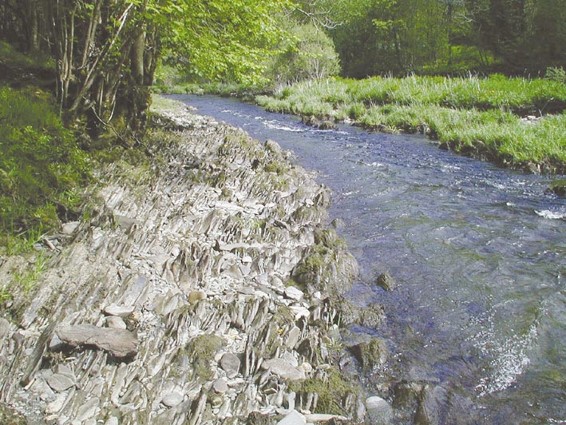
Example of a solid rock outcrop
Boulder (BO)
Large rocks >=256mm in diameter (larger than head size) that can be loose, embedded or interlocked. When boulders are put in place by people, record as ‘rip-rap’ material (RR), and reinforced (RI) bank modification.
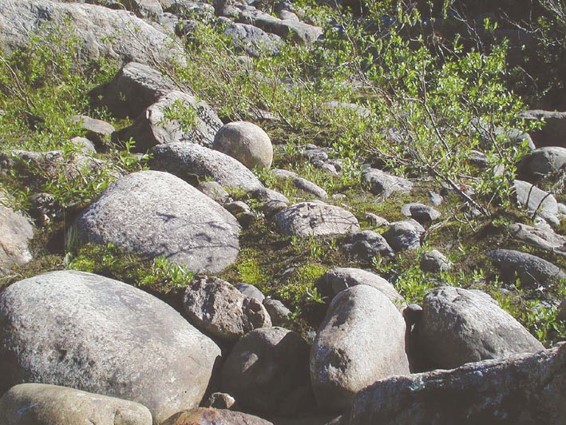
Example of bank material boulders
Cobble (CO)
Loose rock material 64-256mm in diameter (half-fist to large head size). Often associated with glacial deposits.
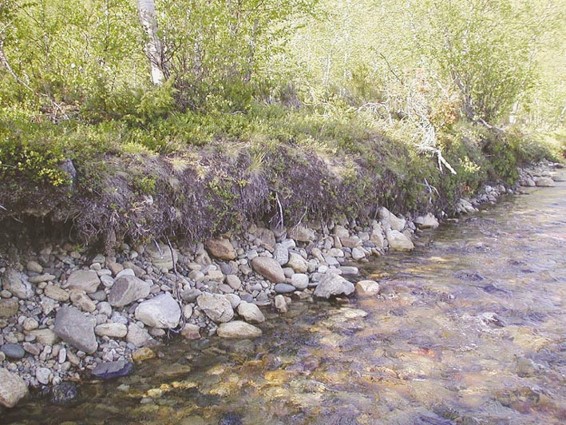
Example of bank material cobbles
Gravel/sand (GS)
Combined category. Loose material, comprising: coarse gravel, (including pebbles 16-64mm in diameter); fine gravel (2-16mm in diameter); and sand (<2mm in diameter). Often associated with glacial and fluvial deposits.
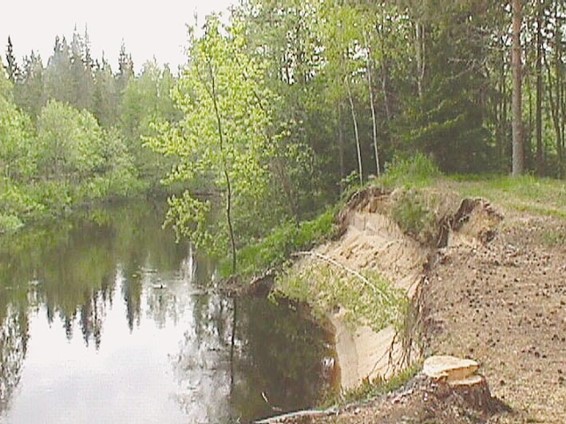
Example of bank material sand
Earth (EA)
Soil comprising mainly crumbly loam material, but not predominantly composed of clays (see clay - CL). A jab with a ranging pole will leave no distinct hole, or one with ragged or crumbling edges.

Example of bank material earth
Peat (PE)
Material formed almost entirely of organic matter derived from decayed vegetation under water-logged conditions and therefore usually associated with heaths and bogs. Peat is normally dark brown or black.
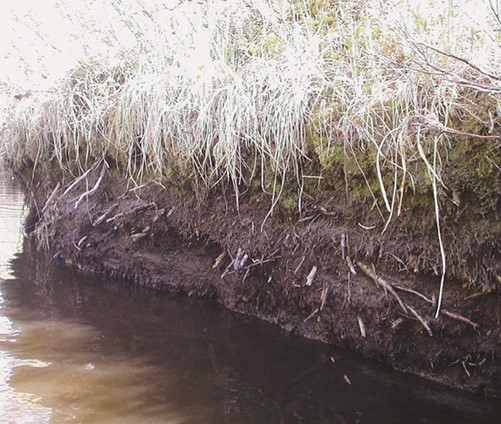
Example of bank material peat
Sticky clay (CL)
Distinctive, solid and cohesive soil material. Compared with earth (EA), it is sticky when rubbed between finger and thumb. A jab from a ranging pole will produce a neat, smooth, conical hole.
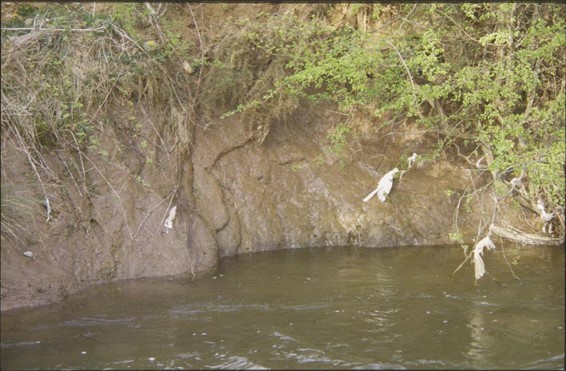
![]()
Example of bank material clay
ARTIFICIAL MATERIALS
When recorded as bank materials, they will also be noted as reinforced (RI) in bank modifications.
Concrete (CC)
Cemented bankface reinforcement that forms a solid revetment with no gaps or fissures.

Example of bank material concrete
Sheet piling (SP)
Vertical, inter-locking, steel sheets protecting the bankface. Includes corrugated iron.
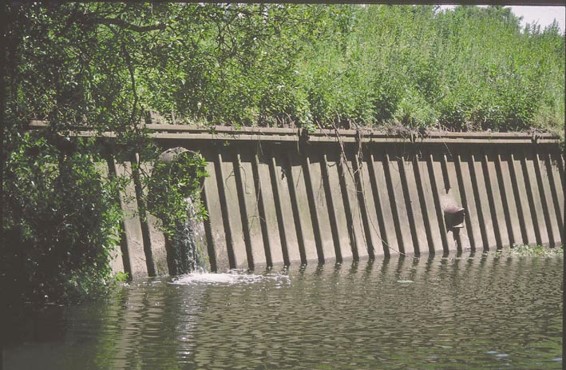
Example of sheet piling bank material
Wood piling (WP)
Wooden poles, or horizontal/vertical planks protecting the bankface (most often the lower half or toe of the bank only).
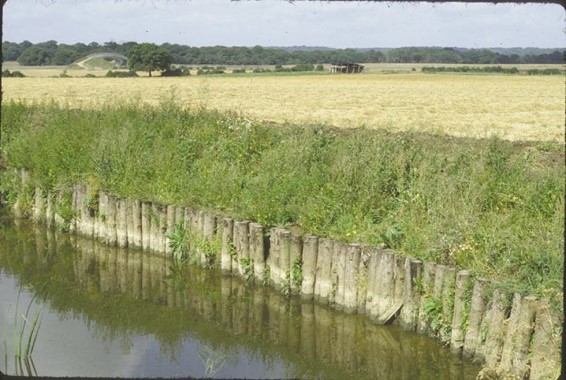
Example of wood piling in a bank
Gabion (GA)
Stones in wire baskets; installed to protect banks from erosion.
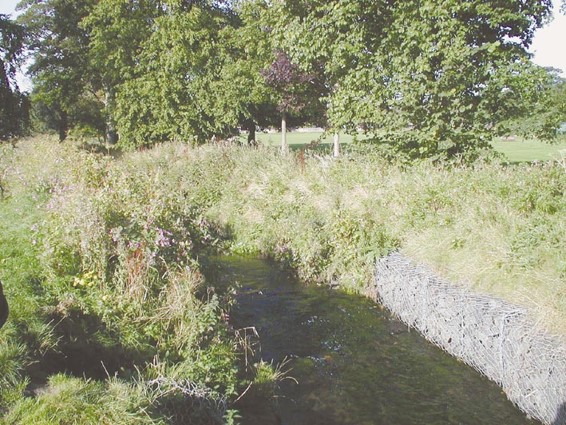
Example of gabions in a bank
Brick/laid stone (BR)
Bank protection that includes any cemented walls, including brick walls, and also regimented, un-cemented, laid stones characteristic of riverside walls in the Lake District and limestone dales.
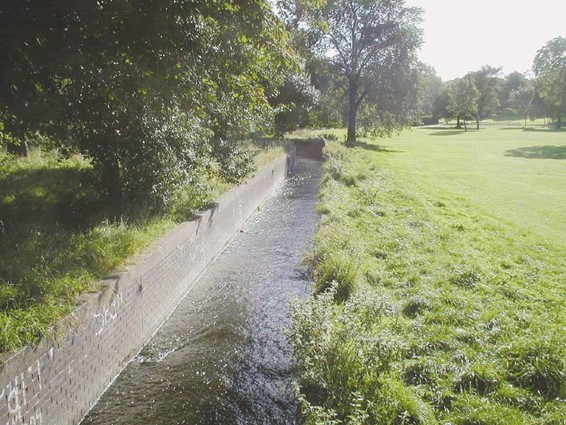
Example of bank material brick
Rip-rap (RR)
Boulders (normally quarried and ±square and of similar size) purposely tipped or laid along the bankface to protect it from erosion. Rip-rap is often along the toe of the bank only. Includes un-cemented blockstone and boulders compacted into the bank with vegetated soil between.
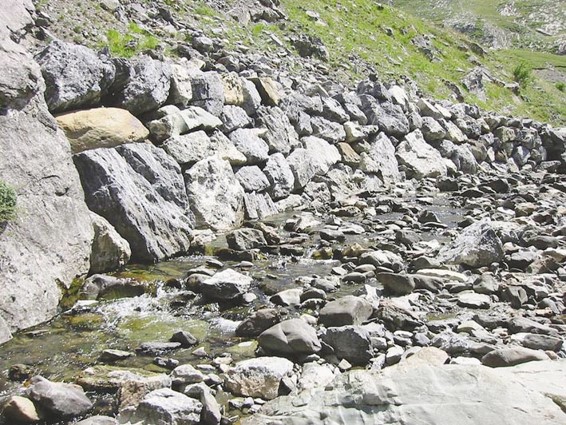
Example of rip-rap in a bank
Tipped debris (TD)
Discarded material from, for example, farming, mineral extraction and building works. Includes: rubble, metal, wood, old cars and excavated soils and other minerals. Location on the bank may be un-intentional, or to provide extra bank protection. If providing bank protection, reinforcement (RI) should be recorded in bank modification.
If in doubt, enter miscellaneous artificial materials here (e.g. tyres) and take a photograph.
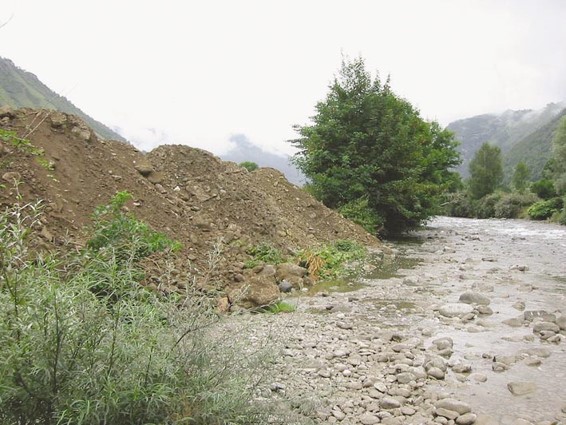
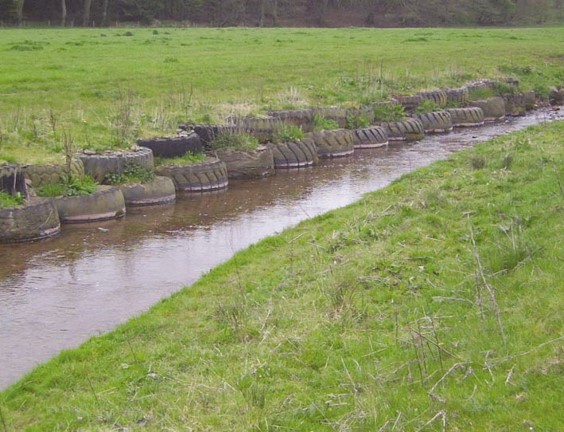
Example of tipped debris (TD) in a bank left, and tipped debris offering bank protection (TD, RI)(right)
Fabric (FA)
Synthetic (usually permeable geo-textile) bank protection fabric often used in conjunction with soil back-fill. Always non-biodegradable, with the prime function of bank support and protection from erosion. Includes materials such as plastic, and proprietary products such as ‘enkamat’ and ‘nicospan’.

Example of bank material fabric
Bio-engineering materials (BI)
Live or dead plants (or non-synthetic materials) used to protect banks from erosion, and often to create/restore bankside and marginal habitat. Typical materials include live willow stakes and spiles, dead brushwood faggots, bio-degradable matting and planted reeds. When used in combination with synthetic fabrics (FA), record whichever has the dominant surface area.
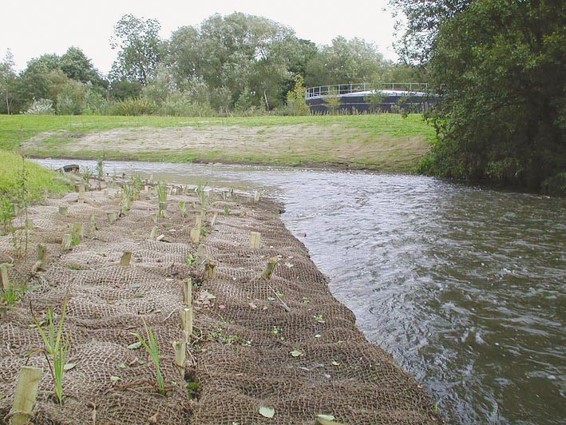
Example of Bio-engineered material in a bank